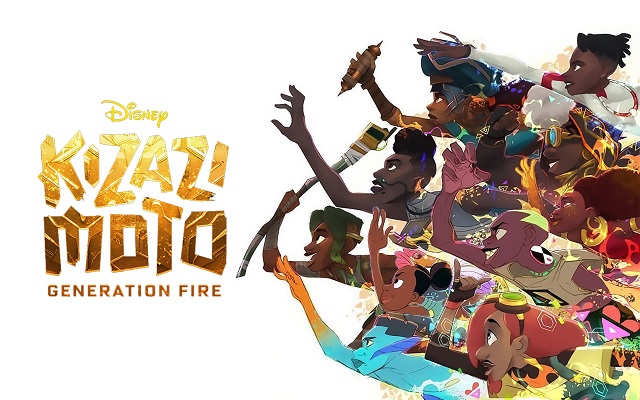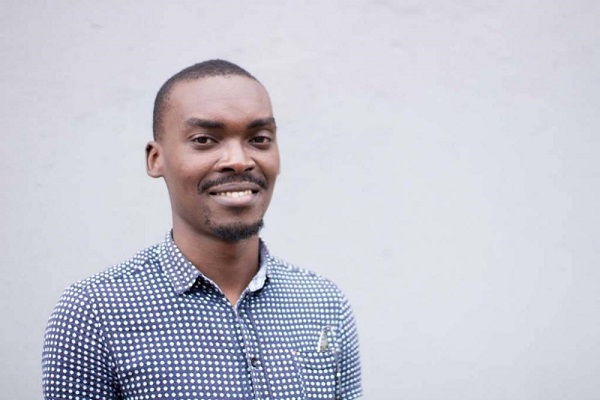
Ugandan Raymond Malinga leads creators of new Disney series
Kampala, Uganda | WATER MARWIZI | Ugandan Raymond Malinga is leading the new crop of creators who produced sci-fi and fantasy short films for the new Disney series; ‘Kizazi Moto: Generation Fire’.
Kizazi Moto is an anthology series blending various mythologies with sci-fi and fantasy. It consists of ten episodes created by talented African animators from Egypt, Kenya, Nigeria, South Africa, Uganda, and Zimbabwe.
Produced by Triggerfish, a South African animation studio, the series showcases advanced technology, aliens, spirits, and monsters, all while paying tribute to African culture.
The ten films included in the series are “Stardust,” “Mkhuzi: The Spirit Racer,” “Hatima,” “Enkai,” “Moremi,” “Surf Sangoma,” “Mukudzei,” “First Totem Problems,” “Herderboy,” and “You Give Me Heart.”
Ugandan Raymond Malinga is leading the new crop of creators who produced the short films for the series. His short film, Herderboy, made the cut as Kizazi Moto’s first episode.
Herderboy features teenager Ndahura, a would-be shepherd who seeks to establish his position among the great shepherds in a futuristic Uganda.
Malinga recently explained that the story is not just about youngsters tending their flocks but is also a metaphor for how young African animators seek recognition worldwide.
Recounting how his animation journey started, Malinga told a TEDx event in Uganda that he dropped out from his computer science degree studies to pursue animation in Malaysia, prompting his colleagues to conclude that he had gone insane.
“You have to understand. Back in those days when people heard that you wanted to go and pursue a career in animation, you would often get reactions like, ‘Are you crazy?’ ‘Will you make money?’ ‘Will you achieve anything?’ How will you be useful in society?” said Malinga.
Brushing off the criticism, a determined Malinga took the risk of flying to Malaysia, where he studied for a Bachelor of Multimedia Animation and Visual Effects degree.
His talent became clear while studying when his short film White Collar Time (2014) earned him accolades in several International student film award competitions.
The young animator then worked as a junior production executive at Wau Animation Studio in Malaysia for seven months before returning to Kampala to establish Creatures Animation Studio.

Malinga, whose debut series’ Kunda & Friends’ (for Oladele Olafuyi and Louisa Olafuyi’s Kunda Kids) also debuted this year, made a breakthrough when he directed a short animated film ‘A Kalabanda Ate my Homework’ in 2017.
This animated story is about a boy who goes to school and claims that a mythological creature called the Kalabanda ate his homework and won six awards and 12 nominations across the globe.
It was shown at the Cape Town International and Cannes Film Festivals, where Malinga met the international film directors who tapped him for the Kizazi Moto anthology.
Ng’endo Mukii is another East African whose work features in the anthology. She runs her own animation and art studio in Nairobi. The Kenyan filmmaker who produced Kizazi Moto’s ‘Enkai’ is an award-winning film director, well known for ‘Yellow Fever’, an animation that explores Western influences on African women’s ideals of beauty.
Her films have won numerous awards, including Silver Hugo for Best Animated Short at the Chicago International Film Festival, Best Short Film at the Africa Magic Viewers’ Choice Awards both for Yellow Fever, and the Encounters Immersive Grand Prix for her film, Nairobi Berries.
Mukii is a Rhode Island School of Design graduate and holds a Master of Arts in Animation from the UK’s Royal College of Art.
She told whatsondisneyplus.com in the U.S. that Africans have already been breaking boundaries within music and the acting sphere.
“We’ve been waiting for this sort of support (Kizazi Moto) so that we can really push the boundaries of how we express ourselves in animation,” she said.
Another talent is Shofela Coker, who wrote and directed the short futuristic film Moremi. Coker is proficient in character design and production, comics and storyboarding and development, and 2D and 3D conception, visual development and sculpting.
A few years ago, these were skills associated with the CVs of animators who ply their trade in Hollywood and other major film-making centres rather than in Africa. However, Coker, who holds a Bachelor of Design Arts in Illustration and Art History from Memphis College of Art in the U.S., is just one of a host of talented Africans now making animated worlds for international audiences from Africa.
Coker won contracts at OddBot Animation, a full-service Emmy-nominated animation studio in the U.S. that specialises in crafting original stories and characters for Netflix, Disney and other studios, and at Titmouse. In 2017, the African creative art directed the animated documentary, Liyana, executive produced by Emmy winner Thandie Newton and produced by Oscar winner Daniel Junge.
In Zimbabwe, Pious Nyenyewa, who leads Alula Animation Company, collaborated with Tafadzwa Hove, a holder of a Bachelor’s degree in Film and Media from the University of Cape Town, to produce Mukudzei, a futuristic take on Great Zimbabwe.
Hove is an experienced film director, screenwriter, editor and cameraman with a demonstrated history of working in the media production industry.
Nthato Mokgatana, a South African filmmaker, also got the chance to show off her talent with ‘Surf Sangoma’, described as an “Afrofuturist horror flick that will leave you on the edge of your seat”.
The film, set in a post-apocalyptic Durban hard-hit by dangerous waves, is directed by Catherine Green and Terence Neale.
Other African films that made it in Kizazi Moto were ‘You Give Me Heart’ by Lesego Vorster, ‘Hatima’ by Isaac Mogajane and Terence Maluleke Nseko, ‘Mkhuzi: The Spirit Racer’ by Malcolm Wope and Simanga Sibaya, ‘First Totem Problems’ by Tshepo Moche and ‘Stardust’ by Ahmed Teilab.
While Kizazi Moto shows abundant animation talent in Africa, creatives continue to be questioned about the usefulness of investing in cartoon-making on a continent that lacks essential services.
Reacting to that criticism, Malinga said that futuristic animated stories could inspire the next generation of visionaries – by “implanting a visual seed” and stimulating potential.
“The stories that we tell could inspire the next doctor who finds a cure for a disease, the next engineer who invents a unique mode of transport that is unseen, or an architect who constructs and designs the next world wonder right here in the continent of Africa. Or even, perhaps, the next animator,” he said.
****
Source: bird story agency
 The Independent Uganda: You get the Truth we Pay the Price
The Independent Uganda: You get the Truth we Pay the Price



